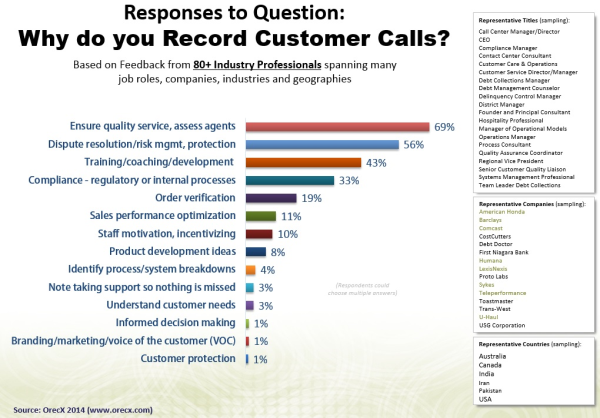Organizations of all sizes today employ call recording software to help optimize sales, service and compliance; and when chosen and managed correctly, these solutions can be invaluable in this regard. However, call recording software is not always selected or utilized properly, and when this happens, its effectiveness can be significantly stifled.

Below is a list of the top 5 mistakes companies make when purchasing, deploying or managing a call recording software system:
1. Neglecting to try the software out first before purchasing it. You wouldn't buy a car without first test driving it. The same holds true for call recording software. You must install it in your environment and give it a test run before committing to a full purchase. Not all call recording software providers offer such a trial, but some do. Demand that you get to trial the software upfront.
2. Ensuring it has the necessary compliance capabilities. Most firms today fall under some sort of regulations - PCI-DSS, HIPAA, Telemarketing Sales Rule, etc. You want to be sure your new software supports these requirements with call masking/muting, e.g. to eliminate sensitive information from the call recording, or other capabilities.
3. Not creating and saving specific search queries. You should be able to develop highly specific search queries for pulling up all calls that meet certain criteria - such as all calls over five minutes that mention the word "cancel", or all calls involving support for a new product, etc. These search parameters need to be able to be saved and running in the background so these interactions are automatically cued for you for quick and easy discovery. Speech analytics software may need to be installed in concert with call recording software to bring these capabilities to life.
4. Not leveraging call recordings for the benefit of the full organization - There is no better way to tie your complete staff directly to the voice of the customer than by letting them hear the actual voice of the customer. If you have a loud speaker in the office, notify all staff to listen for three minutes - once a week or so - while you play a good service call for them. If you don't have a broadcasting capability, simply email a select recording to all staff and require them to listen to it, again, once a week or so. Almost no organizations today do this, but it's a fantastic way to tie the customer and all of your employees together.
5. Not ensuring the software has an open API or tested and easy integration to your PBX, CRM system, and so on. The last thing you want is a new solution that is very difficult to integrate with your current environment. Be sure to ask for testing certifications from switch vendors, proof of a true open API, etc. This is a very big pitfall that many organizations fall into. Call recording vendors love to tell you that they can integrate seamlessly with any PBX but when push comes to shove it's a clunky, complicated, arduous and time consuming process. You want to avoid all of this hassle at all costs. It slows down your implementation, rings up your cost and creates a whole lot of unnecessary headache.












